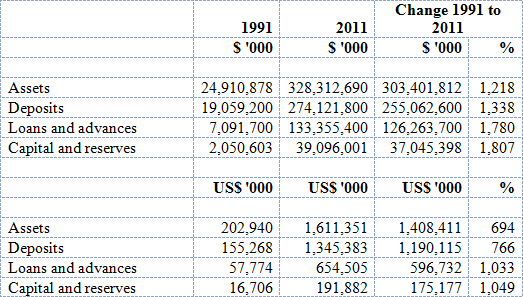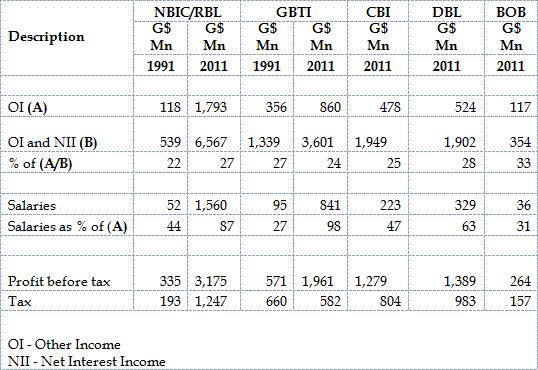Introduction
The quotation taken from a judgment of US Supreme Court Judge Wiley Blount Rutledge is as true today as when it was handed down in a case nearly seventy years ago. But it is perhaps even more relevant today than it was then, its relevance best understood against some of the practices by employers − sometimes with the complicity of the employees, and sometimes not.
Let me give a few practical examples. Suppose entity A has a defined organisation structure with stipulated qualifications and fixed salaries. And suppose entity A wants to employ a relative of one of its top brass, for a) a position that is not on the establishment; or b) the relative does not possess the requisite qualification; or, c) the relative possesses the requisite qualification, but is to be paid remuneration higher than the one fixed on the establishment.
Another is a government on which the budget authority has imposed an employment and wage freeze. Yet another is one which wants to circumvent the law requiring the deduction of income tax and NIS from employees’ earnings.
Many entities faced with these situations choose the route of engaging the person not as an employee but as an independent contractor.
And as the examples indicate, this practice is undertaken by all employers, governments and the private sector alike. I am surprised how many employers – and employees – think that once a position is labelled independent contractor, many of the obligations to which an employer is otherwise subject, do not apply.
Employers 2, Employees 0
There is a further and equally important consideration. Coverage under employment laws boils down to whether or not the individuals in question are ‘employees’ and whether or not the entity in question is an ‘employer.’ So if you fall and break your leg, the law to be applied often hinges on whether you are an employee.
And from a financial perspective, it has been estimated that classifying individuals as independent contractors instead of as employees might result in a savings of twenty to forty per cent of labour costs. No pensions, no medical, no allowances, no overtime, no nothing − just salaries.
So employers have everything to gain, and little to lose by defining a person as an independent contractor rather than an employee.
But this has serious public policy implications by characterizing an individual as an employee, which include protection under various employment laws as well as a requirement that PAYE must be paid. It is surprising that we do not hear in Guyana of more cases reaching the courts because the problem is both widespread and acute.
Ram & McRae, the accounting firm is often called on to advise businesses on the distinction between employer and employee and this column draws on some of the research undertaken in consequence thereof.
A real case
Two years ago, an interesting case came before the UK Supreme Court. The facts as set out provided a useful framework to determine the employer/employee question. The company, Autoclenz Limited had a contract to valet cars. Twenty valeters signed contracts with Autoclenz to provide car cleaning services. The contracts contained the following clauses indicative of a contractor relationship:
• There was no duty to accept work
• There was a right of substitution (to send the work elsewhere)
• They expressly described themselves as self-employed
• They paid their own tax
• They purchased their own insurance, uniforms and some materials.
In reality, Autoclenz Limited provided all the cleaning products and equipment and arranged group insurance cover. The valeters submitted weekly invoices to Autoclenz Limited for their work. Autoclenz Limited deducted a fixed sum for the provision of cleaning materials and insurance from the payment due each week. The valeters were responsible for payment of their tax and NIC.
Subsequently, the valeters brought claims to a tribunal seeking a declaration that they were workers and an order for Autoclenz Limited to pay them the national minimum wages and unpaid holiday pay under the Working Time Regulations 1998. Autoclenz Limited argued that the statutory rights were not available to them as they were contractors.
The courts
The tribunal decided in favour of the valeters on the grounds that the degree of control exercised by Autoclenz Limited fully integrated the valeters into its business and that the contract terms permitting the valeters to provide substitutes and suggesting a lack of mutual obligations did not reflect the reality of the situation. In practice, the valeters were required to turn up for work every day and to notify Autoclenz Limited in advance if they were unable to work. In other words, several of the terms were shams.
Autoclenz Limited appealed to the Employment Appeal Tribunal (EAT) which allowed the appeal in part and held that the valeters were not employees but that they were workers. This displeased both sides and so Autoclenz Limited appealed against the decision that the valeters were workers while the valeters cross-appealed against the decision that they were not employees.
The Court of Appeal reinstated the tribunal’s decision, dismissing Autoclenz Limited’s appeal and allowing the valeters’ cross-appeal. The Court of Appeal held that, when determining an individual’s status, tribunals should look at the actual legal obligations of the parties. It was not necessary to show a common intention of the parties to mislead. Autoclenz Limited appealed to the Supreme Court.
And so the case went to the UK Supreme Court which unanimously dismissed Autoclenz Limited’s appeal and upheld the decision of the Court of the Appeal that the valeters were employed under contracts of employment and thus entitled to receive the national minimum wage and statutory paid annual leave.
The principle
In the process the Supreme Court ruled as too narrow a long-standing rule that as long as the written contract is not a ‘sham’, its terms would prevail. Because of the hierarchy of courts in the UK, tribunals and courts will be able to set aside express contractual terms which are inconsistent with the reality of the relationship of the parties, without having to establish a common intention of the parties to mislead.
Even as the case wound through the judicial system, the judgment of MacKenna J in the case Ready Mixed Concrete (South East) Ltd v Minister of Pensions and National Insurance was cited with approval. He said: “A contract of service exists if these three conditions are fulfilled.
(i) The servant agrees that, in consideration of a wage or other remuneration, he will provide his own work and skill in the performance of some service for his master.
(ii) He agrees, expressly or impliedly, that in the performance of that service he will be subject to the other’s control in a sufficient degree to make that other master.
(iii) The other provisions of the contract are consistent with its being a contract of service … Freedom to do a job either by one’s own hands or by another’s is inconsistent with a contract of service, though a limited or occasional power of delegation may not be.”
Conclusion
My view is that the practice by employers deprives workers of significant rights and exposes them to serious obligations. As noted earlier their rights to protection by employers for industrial injuries and death are restricted if not entirely eliminated. And on the other hand the employer shifts his responsibility to deduct and pay over taxes and NIS which now become the obligation of the employee.
I am not hopeful that the government is keen or mindful of cleaning up a situation in which it is itself involved. Here is how. It may receive funding from the British to pay the salaries for some climate change consultant. By law, that money should be paid into the Consolidated Fund as grant and then paid out as an expenditure by way of an appropriation. This government has no appetite for such accountability. It is simply paid to the consultant as an independent contractor without taxes etc, being deducted and paid over.
I would like to see the GRA directing some resources and attention to this issue. It will bring in lots more tax revenues. And I hope too that the Attorney General and the Minister of Labour would direct their attention to any omissions in the law. They will protect the workers.




